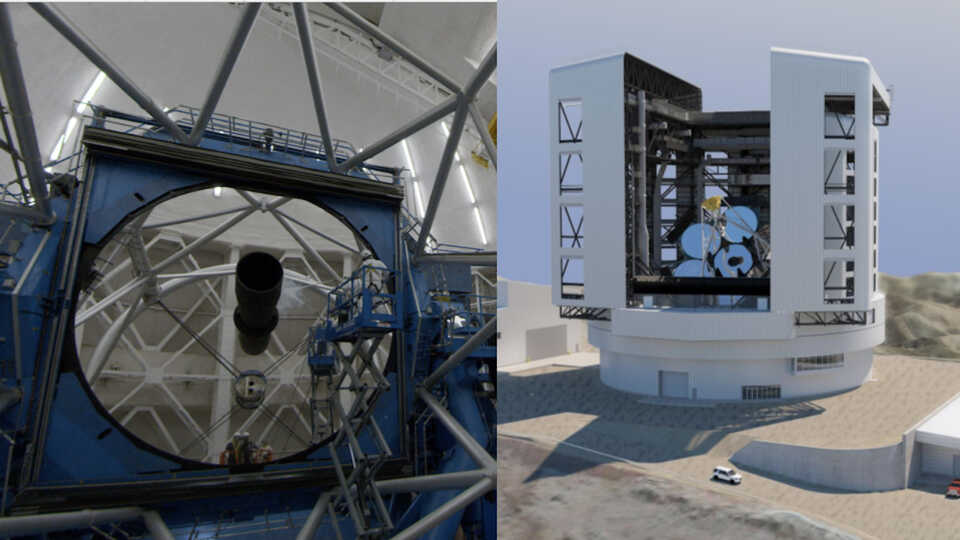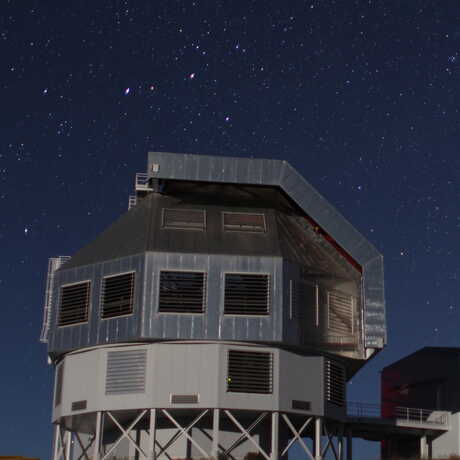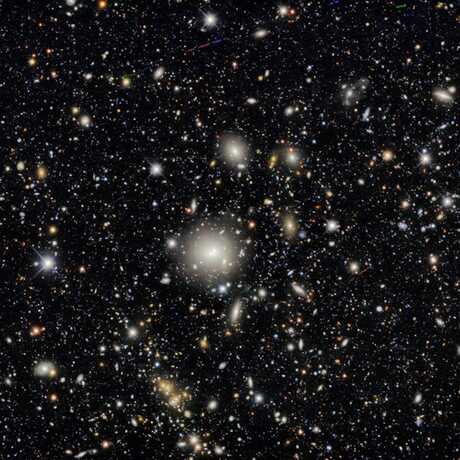Universe Update
Observations: New Telescopes in Chile

Have you had a chance to catch our new production, Big Astronomy? Until the Academy and Morrison Planetarium are able to reopen, you can catch it live on the Academy’s YouTube channel each Wednesday at 11:30 a.m. (The link to tomorrow’s broadcast is here; check our page for future dates.)
The show features three of the many telescopes in Chile, some of the discoveries made by those telescopes, and the people who work there. Several of us from the production team traveled to the sites for filming and it left a huge impression—these places are some of the most spectacularly beautiful locations on our planet. In addition, the people are so welcoming and excited to share their country and the work they do that we all miss the place, however short a time we spent there.
So, every other week, we’ll share news from Chilean observatories here and on our Facebook page. In this time without travel, we will bring Chile—and the cosmos—to you, and take part in virtual return trips ourselves. So fasten your seatbelt, stow your carry on, and put your seat back in its upright position, and let’s takeoff for Chile! Our first stop today will be Antofagasta in northern Chile, where the Extremely Large Telescope (ELT) is under construction.
In fact, today’s post will cover the next generation of Chilean telescopes, currently planned or under construction. Much of this news is from a talk held last week by our colleagues at the SETI Institute; the entire hour-long presentation is here, if you’d like to watch it. The speakers only touched on the ELT, but with a mirror 39 meters (128 feet) in diameter, it will be the world’s largest optical telescope when it sees first light in 2025. As Christophe Dumas mentioned in the SETI talk, when it comes to telescopes, “Size matters… If you have a bigger telescope, you have a higher sensitivity, you can observe fainter objects… you have an image quality with finer details.” (Big Astronomy describes how an optical telescope works, but basically, the larger the surface of the primary mirror, the more light the telescope can collect, revealing fainter and fainter objects.) But there are limitations with size, according to Rebecca Bernstein, who also spoke last week, “As you get bigger and bigger with these telescopes, it stops being possible to build something that has a simple primary-secondary mirror combination.” And, in fact, the ELT will have five mirrors, which need to be aligned with one another. In a seismically active region such as Chile, that might prove to be a difficult feat.
Dr. Bernstein is a galactic astronomer who is the project scientist for another huge telescope under construction in Chile, the Giant Magellan Telescope (GMT). It’s being built just down the road from the Las Campanas Observatory near Vallenar. While not as big as the ELT, GMT is also classified as extremely large. The images above should give you an idea of its largesse. The first picture above is a shot from Big Astronomy featuring the Gemini South telescope with its 8.1-meter (27-foot) primary mirror. You can see engineers cleaning the mirror for scale. The second image is a rendering of the primary mirror at GMT—there will actually be seven of them, each with an 8.4-meter (8-foot) diameter! “With this giant leap that we’re getting in both collecting area and resolution,” Dr. Bernstein explained at the talk, “it’s really is going to revolutionize all areas of astronomy.” GMT will be able to see fainter objects, which often means objects that are farther away. Dr. Bernstein gave one example of what GMT will observe: 13 billion year old galaxies that formed right after the Big Bang! And along with images, the telescope will also collect spectra, which can tell us about distance, dynamics, chemistry and even masses of galaxies, stars, and planets, Berstein said. The telescope is expected to come online in about 10 years.
Our final telescope in today’s story is a personal favorite: the Vera C. Rubin Observatory, formerly known as the Large Synoptic Survey Telescope (LSST). (Its main task will be an astronomical survey, the Legacy Survey of Space and Time, which will use the suspiciously similar “LSST” acronym.) Rubin Observatory may not match the size of the ELT or GMT—its lone mirror is 8.4 meters (28 feet) in diameter—but the work it promises to do is incredible! It will survey the entire sky every few nights, creating large amounts of data that anyone can access. We visited the construction site in 2018, and the telescope is featured briefly in Big Astronomy. We hope to produce a video for you about it closer to it seeing first light—this year or next. The SETI talk only touched upon the telescope to say how the launching of Earth-orbiting satellites like Starlink might affect what ground-based telescopes can observe. With its continuous survey, Rubin would see the greatest impacts from these “constellations,” according to Dr. Bernstein. But the good news is that companies such as SpaceX, who are launching these satellites, are open to astronomers’ concerns in protecting the night skies.
So what will be the big discoveries made by these next generation telescopes? The possibilities are endless, according to Dr. Bernstein. “All of the Nobel prize winning science done with the current generation of telescopes were not in the science cases for those telescopes. So I think the most exciting things we’re going to do are not addressing questions we know to ask yet… That’s the most exciting thing about these telescopes—it’s the open discussion space they will bring with this resolution and sensitivity.”
In the meantime, return here in two weeks for exciting new discoveries made by today’s Chilean observatories, and be sure to check out Big Astronomy on the Academy’s YouTube channel!


